An activity that creates controversy
Unlike many marine species (salmon, sea bass, sea bream), the aquaculture of large tunas is not perfectly mastered and continues to be the subject of extensive experimentation in several countries (Australia, Japan, Europe) in order to carry out the complete cycle of farming over several generations, with a view to eliminating catches at sea and maximising profits. Proponents of large tuna aquaculture believe that farming will reduce pressure on wild stocks. Environmental organizations believe that the problem will just be displaced, with fishing pressure shifting to the “forage fish” at the base of the food chain, potentially disrupting the entire marine ecosystem.

Tuna fattening
Bluefin tuna farming is based almost exclusively on “fattening”, a technique that consists of catching young tuna in the wild and growing them in large fish farms to commercial size. Fed with “feed” fish (10 kg of sardines or mackerel will produce 1 kg of tuna), the fish quickly fatten up before being slaughtered and exported to consumer countries, mainly Japan, far from where they are produced, contributing to the emission of greenhouse gases.
The activity is controversial; for sustainable fishing advocates, it decimates future breeders and lacks transparency.
As practiced today, bluefin tuna aquaculture appears to be far from sustainable as it raises, among other issues, the problem of marine resource management, ecological impacts and greenhouse gas emissions.
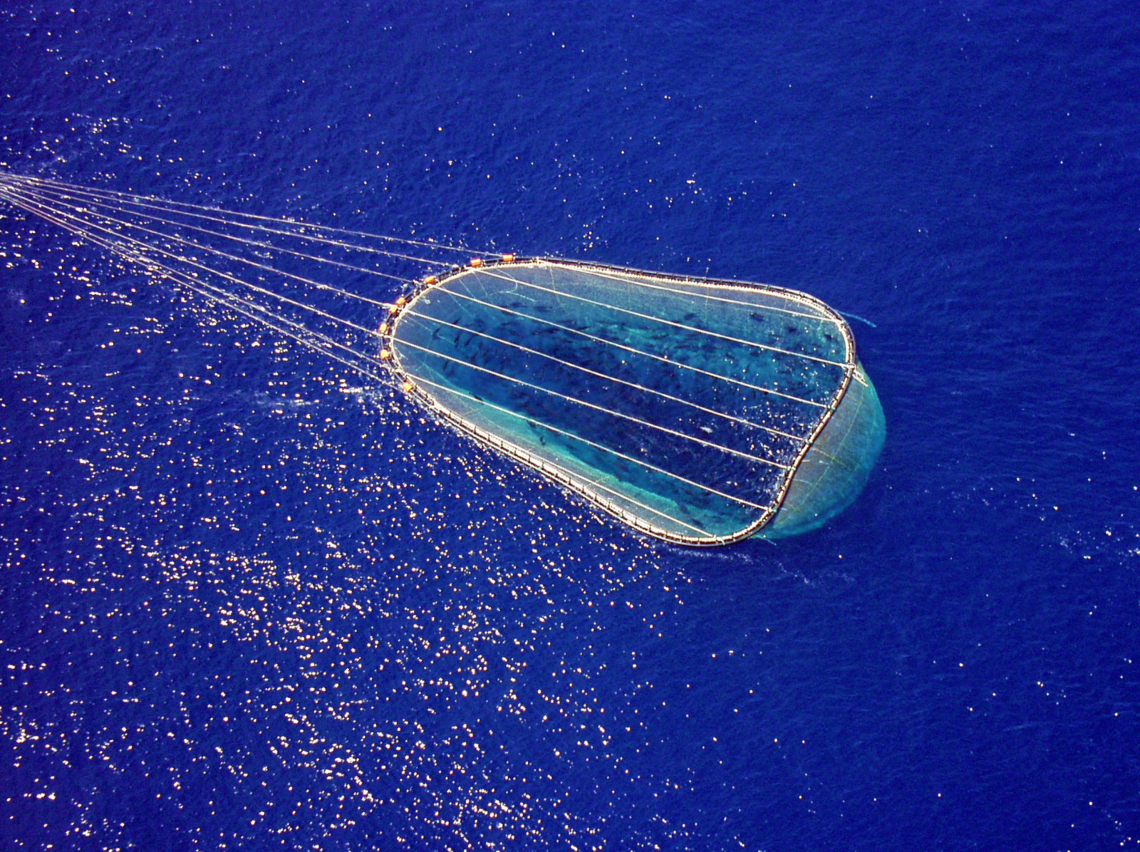
Experts' Corner
Three species with high market value are fattened at the fattening sites: Atlantic bluefin tuna(Thunnus thynnus), Pacific bluefin tuna(Thunnus orientalis) and southern bluefin tuna(Thunnus maccoyii). More than 50 farms, located in Australia, Mexico, Japan and the Mediterranean produced a total of 36,350 tons in 2014, including 14,500 tons of Atlantic bluefin tuna, mainly in Italy, Spain, Croatia, Malta, and Turkey.
The vast majority of bluefin tuna caught in the Mediterranean by industrial fisheries is destined for the fattening activity that serves the Japanese market.

Prudence and discernment
A few years ago, with stocks on the verge of collapse, bluefin tuna consumption was widely discouraged, leading the Principality of Monaco to adopt a consensus moratorium on its consumption. With stocks now in better shape, it is possible to eat bluefin tuna, but with great care. Ethic Ocean suggests to limit the quantity consumed, to privilege the “East Atlantic and Mediterranean” origin and to choose the specimens fished with the rod, of more than 30 kg (thus with sexual maturity). On the other hand, the consumption of bluefin tuna from the “Western Atlantic” stock and other overexploited tuna species, Pacific bluefin tuna (Thunnus orientalis) and Southern bluefin tuna (Thunnus maccoyii) when they come from the southern part of the three oceans, should be avoided.
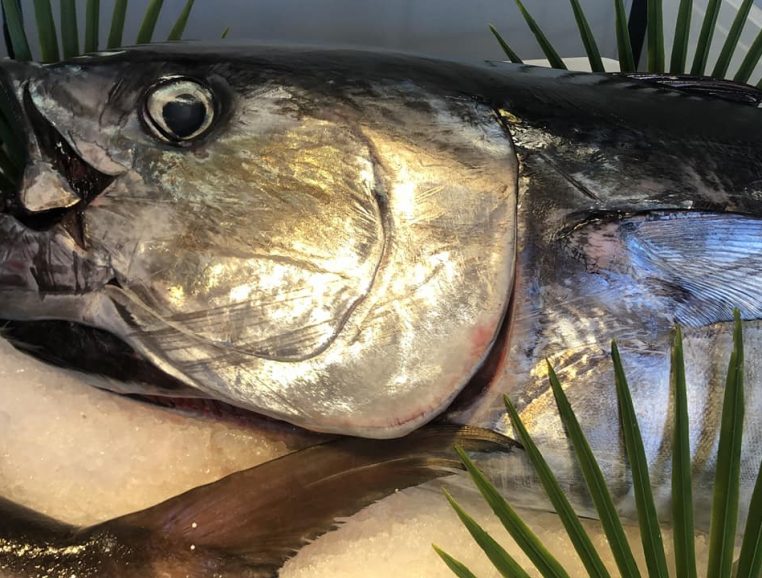
What criteria should be applied?
For Mr.GoodfishUnder the Prince Albert II Foundation’s sustainable consumption programme, bluefin tuna can be eaten but only if it is wild, comes from certain fishing areas (mainly the Atlantic) and is caught outside its breeding period at a recommended minimum size of 120 cm.
The labels
Some labels offer bluefin tuna fished in a responsible manner in accordance with the regulations in force and the specifications specific to the fishing method (longline, pole and line). It concerns bluefin tuna fished by line and includes the right actions to take when catching “by-catch” species (sharks, pelagic rays, sea turtles, birds).
Our best advice: when buying tuna or other seafood, be curious and demanding! Do not hesitate to ask questions to the salesman or the restaurant owner, they are there for that! Try to identify the species you are consuming, where it was caught or produced, the method used and how it was sustainably caught or farmed. Never buy bluefin tuna from recreational or sport fishing, it is forbidden!
12 AUGUST 2020: More on Atlantic bluefin tuna certification...
The Marine Stewardship Council has just awarded the ” sustainable fishing label ” to a fishery using longlines (large lines with hooks) in the eastern Atlantic Ocean (55 tons caught in 2018). This decision comes after an independent legal expert found that the company’s measures fully met the criteria for sustainable fishing. Other fisheries are reportedly in the process of applying for certification.
As a precautionary measure, in view of the scientific uncertainties about the state of the stock, some NGOs are currently opposed to any certification of Atlantic bluefin tuna. For WWF, ” the MSC certification of bluefin tuna is an alarming signal that the outcome is driven by industry demand rather than scientific evidence of sustainability… This may be a dangerous trend that may threaten the full recovery of bluefin tuna and our ability to restore the health of the world’s oceans by 2030. »
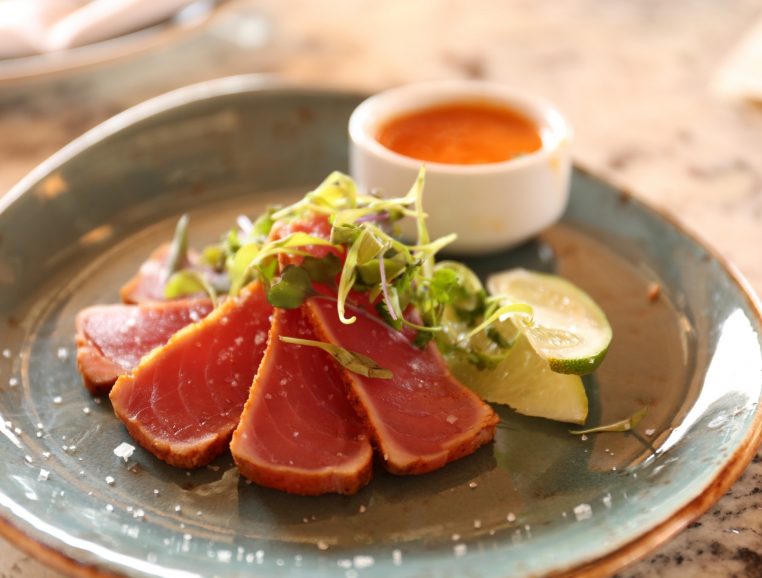
In the 2015 European Red List of Marine Fishes compiled by the International Union for Conservation of Nature (IUCN), Atlantic bluefin tuna is listed as Near Threatened.
Overfishing and overcapacity of fishing fleets are the main cause of the depletion of bluefin tuna.
Did you know?
The scourge of plastic at sea also threatens bluefin tuna. According to a 2015 study of large predators in the Mediterranean (tuna and swordfish), 32.4% of bluefin tuna specimens surveyed contained plastic in their stomachs, a real concern for the IUCN and a wake-up call about the potential effects of this debris on human health.
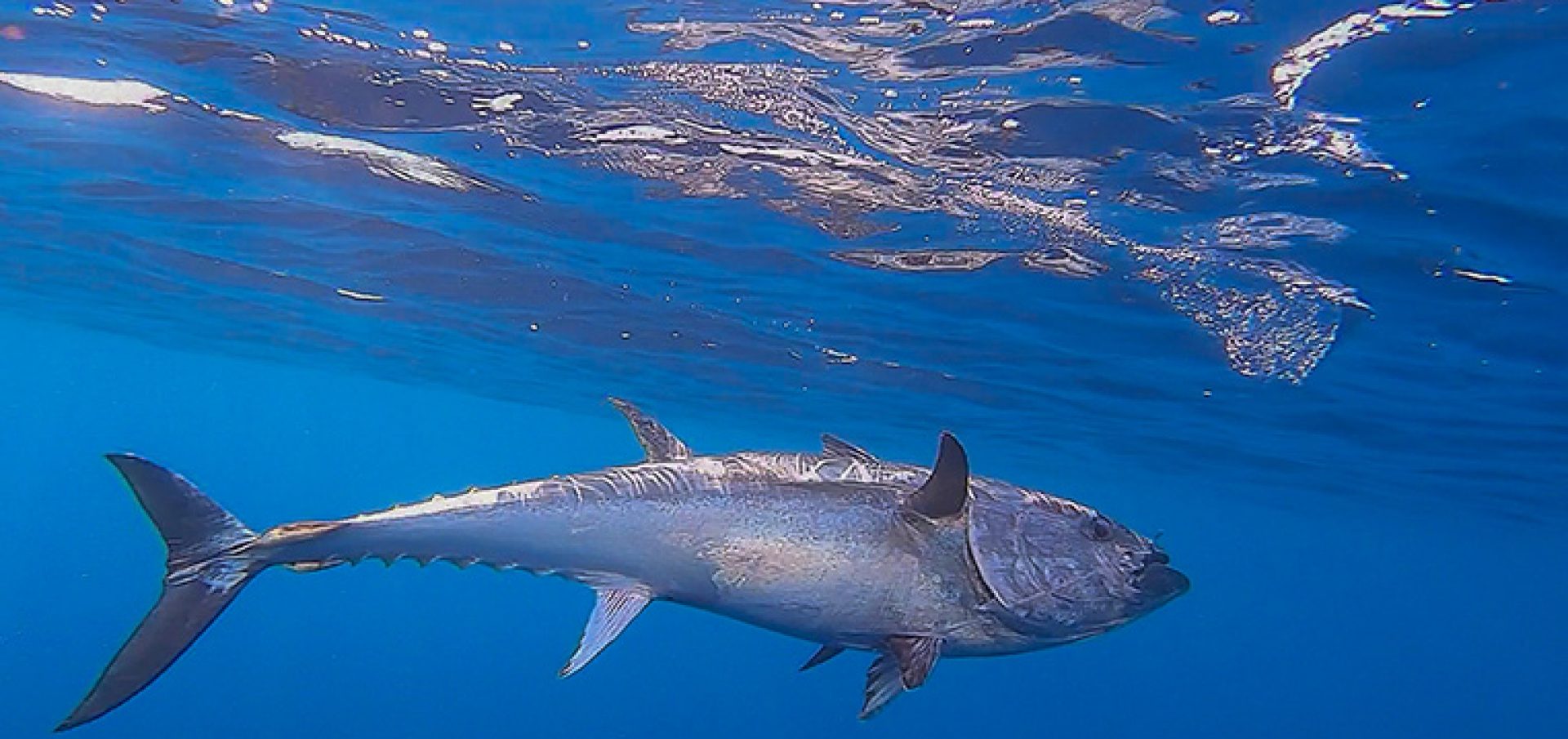
In 2006, in order to avoid a total collapse of the populations, a recovery plan for theEastern Atlantic and Mediterranean was adopted, including measures to monitor and control fishing activities (closed seasons, obligation of a “minimum conservation size” of 115 cm or 30 kg (certain types of fishing have derogations at 8 kg or 75 cm), ban on reconnaissance aircraft, presence of observers on board vessels, traceability of catches, etc.), but the fishing quotas are still too high
A small victory at CITES
Under pressure from NGOs and certain states (including the Principality of Monaco and France) who advocate the inclusion of the species in Annex 1 of the Convention on International Trade in Endangered Species of Wild Fauna and Flora (CITES) – which would have the effect of prohibiting international trade – the quota was revised downwards (13,500 tonnes) for 2010, following scientific advice for the first time; an important victory for organisations working for sustainable bluefin tuna fishing!
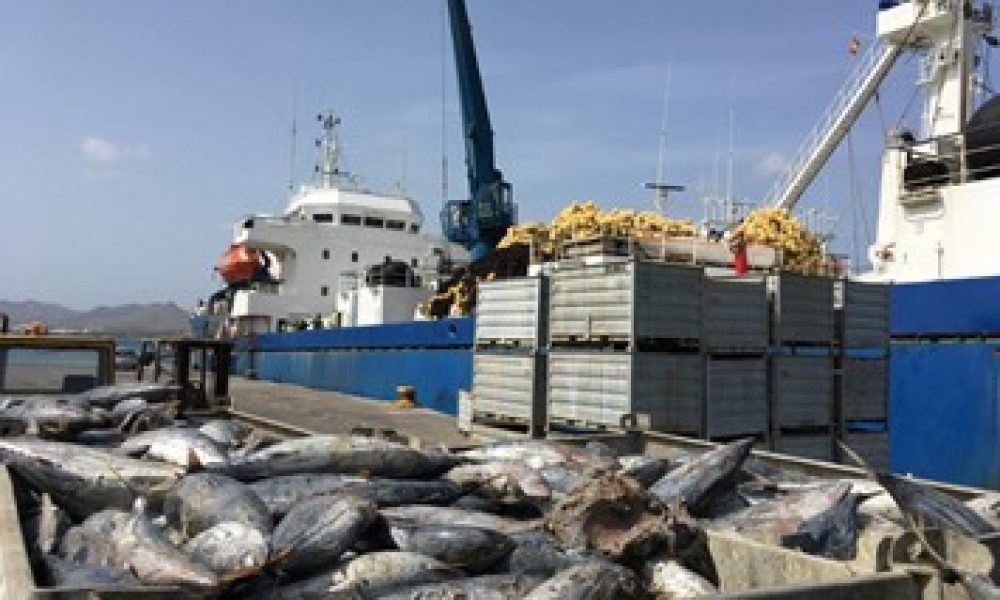
An improving situation since 2019
Thanks to the strengthening of the recovery plan and more effective control, the bluefin tuna situation is improving from 2009 onwards. Declared catches are decreasing, aerial monitoring shows that young bluefin tuna are more abundant, the spawning biomass is increasing, and fishermen are observing them more regularly. Today, the species is no longer “overexploited” but the current stock, although in better condition, is far from having recovered its preindustrial level, and bad practices such as illegal fishing persist.
With fishing quotas set to increase (32,240 tonnes for 2019, 36,000 tonnes for 2020 – including 19,460 tonnes for the European Union and 6,026 tonnes for France) – the highest levels since the recovery plan was put in place – it will be up to the international community, scientists and consumers to carefully monitor the situation of Atlantic bluefin tuna over the coming years. To be continued, then!
Experts' Corner
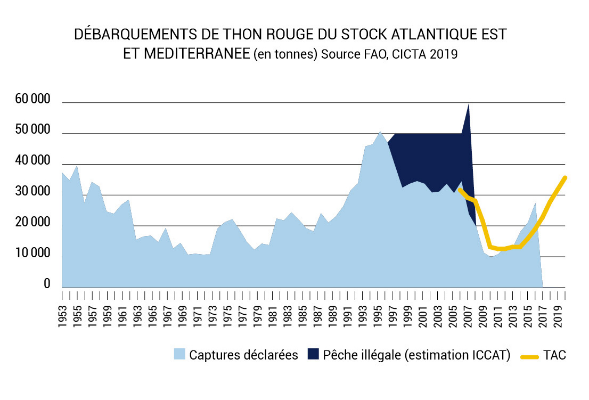
ICCAT's role
In the Atlantic Ocean and adjacent seas (including the Mediterranean), the International Commission for the Conservation of Atlantic Tunas (ICCAT) which is in charge of the conservation and sustainable exploitation of all tuna species and other pelagic commercial species living in the area (swordfish, marlin, sharks). Based on scientific evidence, this regional fisheries management organisation (RFMO) diagnoses the state of populations, produces recommendations so that signatory countries can negotiate binding agreements, define fishing quotas (the famous “TAC”, for “Total Allowable Catch”) and adopt measures to limit by-catch. For Atlantic bluefin tuna, ICCAT considers two distinct management entities, the ” Eastern Atlantic and Mediterranean ” (which accounts for more than 90% of the total Atlantic bluefin tuna catch and population) and the ” Western Atlantic “.
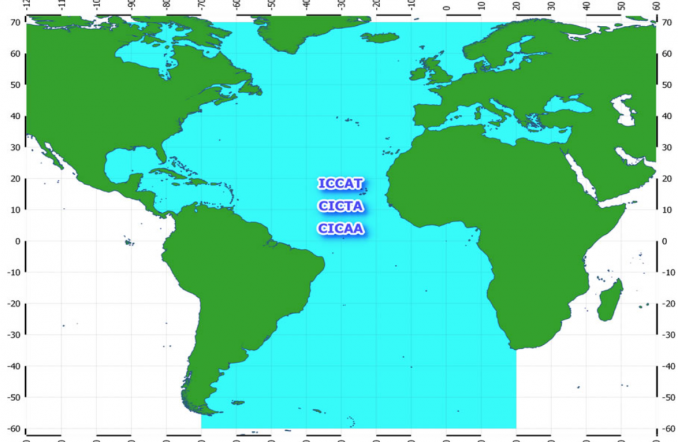
Other tuna managed by ICCAT
In the ICCAT-managed area, the tuna that live alongside Atlantic bluefin tuna are bigeye tuna(Thunnus obesus)(Bigeye tuna), yellowfin tuna (T. albacares)(Yellowfin tuna), albacore(Thunnus alalunga)(Albacore) and skipjack tuna(Katsuwonus pelamis)(Skipjack tuna).
Bluefin tuna is one of the most commercially valuable fish species. The management of bluefin tuna fisheries has long been a symbol of the international community’s difficulty in sustainably managing this rare and fragile resource.
Industry professionals and conservation groups are trying to organize themselves to preserve stocks.
Refusing a programmed disappearance
The International Commission for the Conservation of Atlantic Tunas (ICCAT), created in 1969, succeeded in establishing the first fishing quotas in 1998. In spite of this, in the 2000s, the surge in overfishing led to fears that the species would simply disappear. A strong international mobilization was then born, relayed by Prince Albert II of Monaco and his Foundation.
In partnership with the WWF, the Prince Albert II Foundation is thus among the first organisations to bring the alarming state of bluefin tuna stocks in the Mediterranean to the forefront of the international stage.
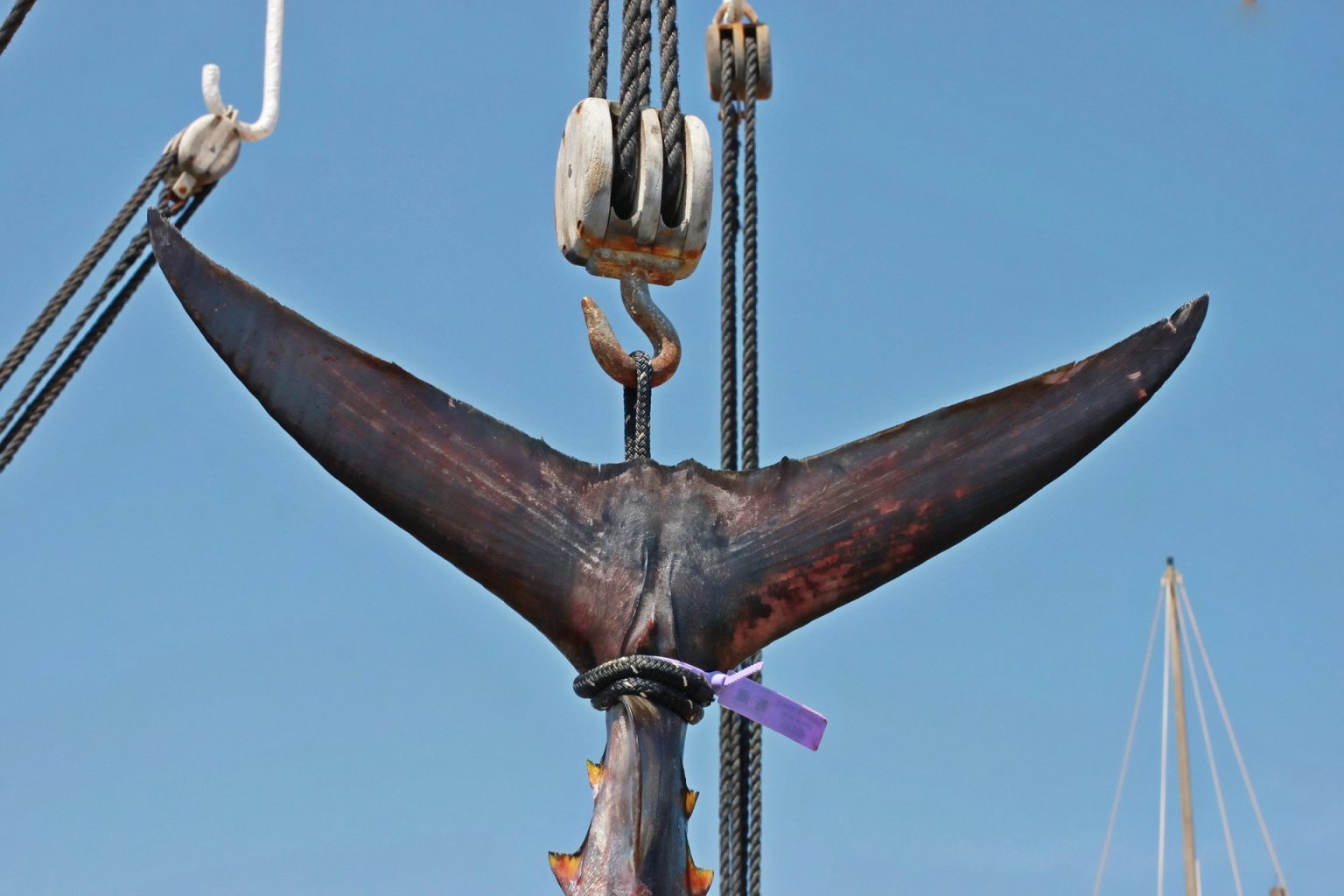
With the MC2D association, she convinced the Principality’s restaurant owners and shopkeepers to stop selling this fish, which is on the verge of extinction.
Together with the Oceanographic Institute, it contributes to informing and mobilizing the general public.
Powerful lobbying
In 2010, at the Doha Conference, the Monegasque Government officially requested the listing of bluefin tuna in Appendix I of CITES. This proposal aims to prohibit international trade in the species and to consolidate existing sustainable traditional fisheries. However, CITES finally voted against this proposal, under pressure from Japan.
Representing 80% of the world’s bluefin tuna consumption, Japan is indeed a powerful lobbyist. The debates and international media coverage of this vote have nevertheless reinforced the awareness of all actors in the sector.
They have promoted the establishment of effective management of bluefin tuna fisheries. ICCAT is lowering fishing quotas from 28,500 to 12,900 tonnes per year, in line with the recommendations of scientists and conservationists. Quotas are also more closely monitored by the countries concerned.
Is hope returning to bluefin tuna stocks?
Thanks to this surge and several favourable years, the first hopes of stabilization and recovery of the Mediterranean bluefin tuna population appear from 2012. At its November 2012 meeting, ICCAT decided to follow the scientific recommendations and maintain quotas at their level, in order to confirm and consolidate these first encouraging signs.
Indeed, these recovery indices should be treated with caution because, as the 2012 ICCAT report points out, “although the situation has improved […], there are still uncertainties surrounding the magnitude and speed of the increase in spawning stock biomass”.
Caution is the order of the day
These uncertainties are linked, on the one hand, to the underestimation of illegal fishing, since ICCAT acknowledges that bluefin tuna catches have been “seriously under-reported” for at least the last 15 years; on the other hand, the lack of knowledge of bluefin tuna migratory patterns does not allow for a good assessment of the stocks.
Improving the traceability of bluefin tuna catches in the coming years therefore remains a major challenge. Since 2008, WWF, supported by the Prince Albert II of Monaco Foundation, has been working to advance knowledge on illegal fishing and stock assessment.
For example, WWF encouraged ICCAT to implement an electronic bluefin tuna catch document in 2013 to facilitate the traceability of catches.
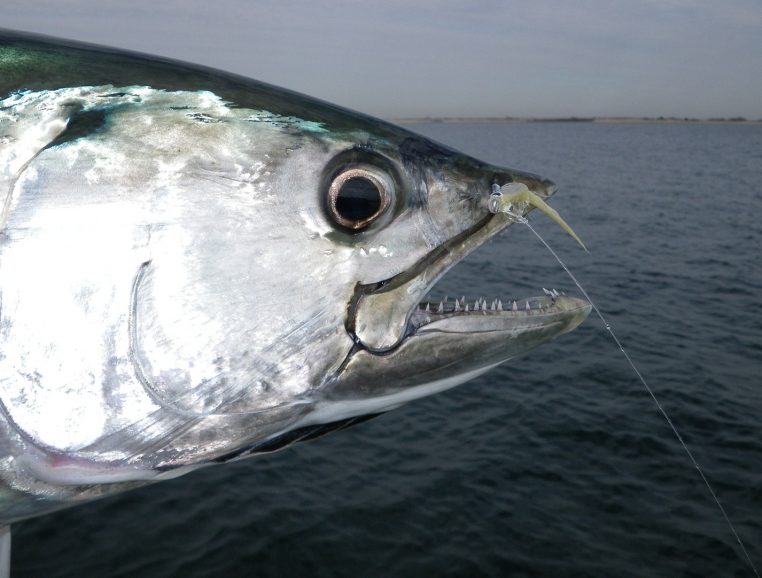
How to protect sharks, treated as by-catch?
However, the scope of ICCAT’s work remains limited. Some protection measures also cover swordfish, but sharks remain exclusively treated as by-catch in tuna fisheries. Various species of sharks are endangered by fishing, especially in the Mediterranean. This situation was recognized in the spring of 2013 by CITES. By including five new shark species in its Appendix II, CITES makes international trade in these species subject to guarantees of sustainability of the stocks fished. However, sharks are beginning to be taken into account. Some management measures are applied in Atlantic waters, notably for porbeagle sharks and some particularly vulnerable species. Norway proposed to consider adding sharks to the list of species managed by ICCAT. However, this will require the common will of all member countries, which remains unlikely.
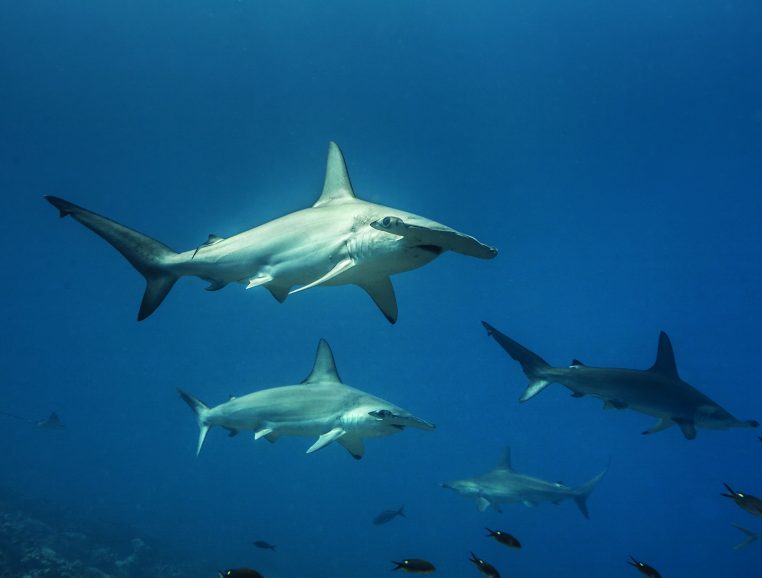
Bluefin tuna, future symbol of good collective management?
A fragile species, bluefin tuna could be transformed from a symbol of resource plundering to one of good collective and shared management based on sound science.
A good dynamic has been initiated in recent years when the situation was critical. However, it will have to be confirmed both by the development of quotas to promote stock recovery and by ICCAT’s ability to extend its action to other threatened species.
The challenge of this rather expensive management model is to consolidate and apply it to other species of lesser commercial value. Indeed, stocks of other large predators are also declining.
How to respond to the
request?
In addition to stock management and catch traceability, which are major issues for ICCAT, other initiatives for the future of bluefin tuna deserve to be highlighted.
The communication campaign “bluefin tuna, a story for the future” and the label “bluefin tuna, artisanal fishing” were launched in 2012 and supported by the French Ministry of the Environment.
They highlight the return of bluefin tuna to the market as a “sustainable” fish when it is fished in a sustainable manner. In addition, some European and Japanese scientific projects for “sustainable aquaculture” aim at the “domestication” of bluefin tuna: .
The reproduction and complete growth of this species in captivity would have the advantage of avoiding the removal of young wild bluefin tuna as has long been the practice for fattening.
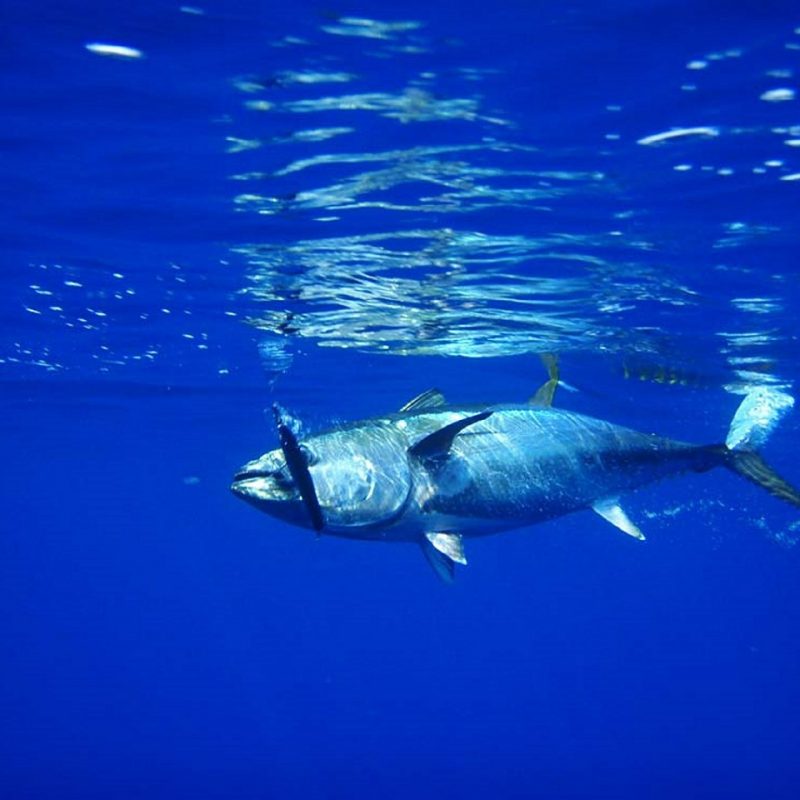
The limits of aquaculture
However, bluefin tuna aquaculture, which has been practiced for over 30 years in Japan (Kinki University), is not profitable. Not very popular with Japanese consumers, its products are often destined for export to Taiwan or the United States.
In any case, there is also the question of raising large predators which themselves need a lot of fish to thrive. Farmed salmon already need 4 kg of “feed fish” to grow 1 kg themselves. The bluefin tuna consumes 11 kg of fish to gain 1 kg! An unsustainable model, whose limits we can measure by drawing a parallel with the fact of breeding tigers or wolves for our consumption: this sums up well the way in which man’s taste for marine animals has developed while he thought marine resources were infinite.
Today, it would be more economically and ecologically interesting to let the wild stock recover and to develop a rigorous sustainable fishery.
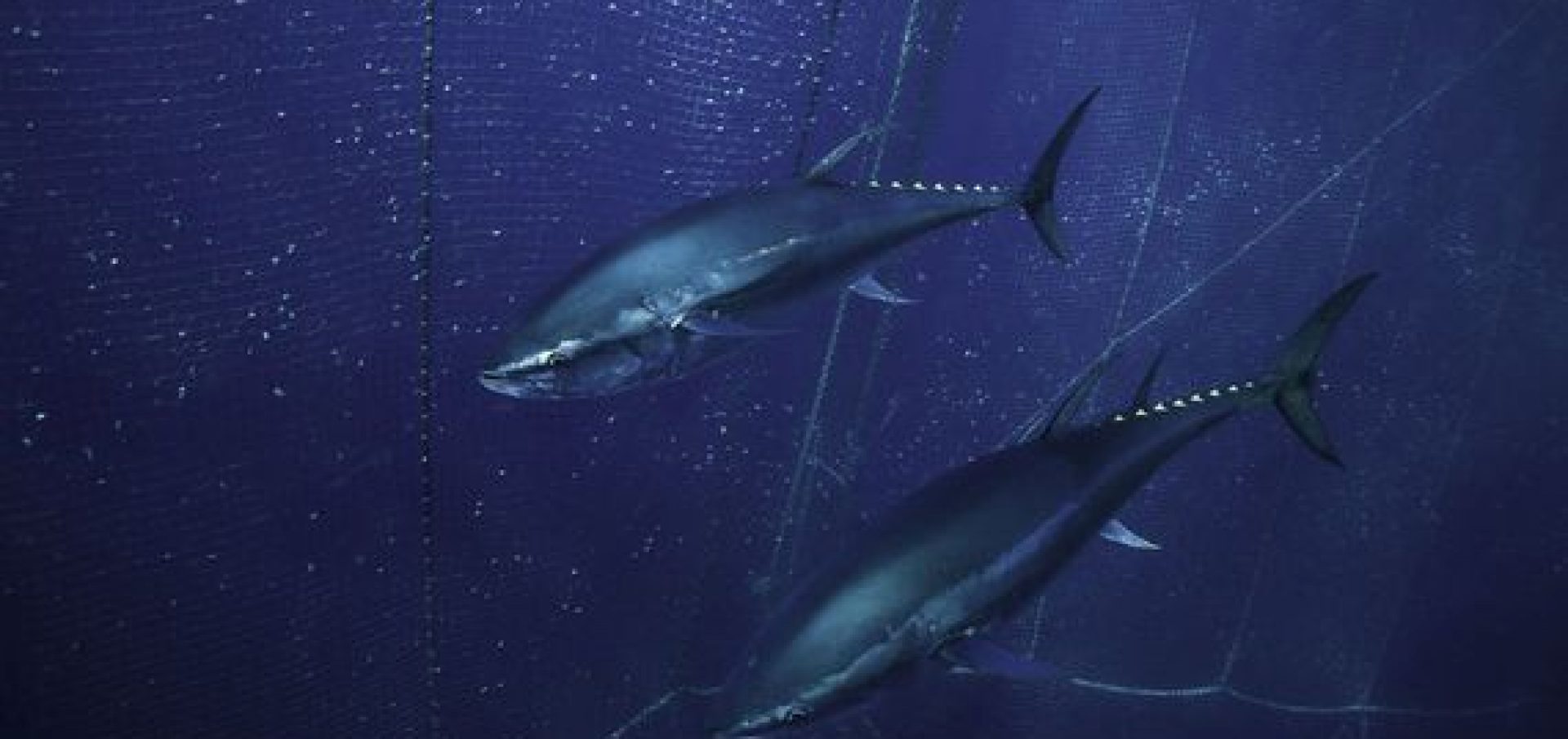
Reasons for hope
In conclusion, the latest observations on the evolution of the bluefin tuna population seem encouraging. However, it will be necessary to be patient to confirm the effective recovery of the stocks, which is expected around 2022. A new assessment of the Mediterranean bluefin tuna population will be carried out in 2014. It will allow monitoring of actual progress and inform decisions on quotas in the coming years.
In the meantime, caution remains the order of the day and many efforts must be made to improve the quality and reliability of data, to combat illegal fishing, to take account of by-catch and traceability and, above all, to support the development of sustainable small-scale fishing.
Highly effective capture techniques
Bluefin tuna are caught by trawl, hook (handline, troll, longline) or in “traps” (fixed traps near the coast) but they are mostly caught by tuna seiners. In the Mediterranean, more than 90% of bluefin tuna catches are made using this method. These hypersophisticated, powerful and fast industrial fishing vessels (speeding at 16 knots or 50 km/h) are capable of detecting shoals thanks to state-of-the-art electronics (radar, sonar). They deploy the “seine”, a gigantic net dropped in an arc that can cover up to 20 hectares at sea, and catch the quota allocated to them in just a few days.
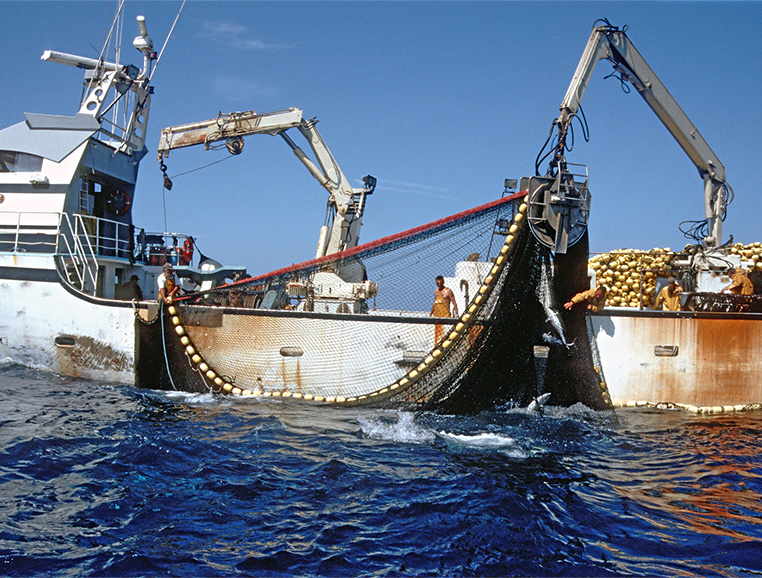
This method raises questions because it targets large individuals that come to breed in specific areas (especially around the Balearic Islands, Sicily and Malta) over short periods (mid-May to mid-July). Not only does it literally “empty” the marine environment, but it also harms non-targeted and highly endangered species (manta rays, turtles, sharks, cetaceans), especially since many tuna vessels use Fish Aggregating Devices (FADs), intelligent floating systems that attract fish and remotely inform vessels of the quantity of fish present. In this case, by-catches may represent 5% of the fishery.
A fishery considered unfair
In the Mediterranean, many consider industrial seine fishing to be unfair, with a few large vessels sharing out almost all the quota to the detriment of small vessels which are now demanding greater access to the resource.
Bluefin tuna is also the subject of a recreational or sport fishing (when affiliated to a federation), extremely regulated with a ban on selling fishing products. For the year 2020, the quota allocated to recreational fishing in France is 60 tonnes. In Monaco, the catch conditions for bluefin tuna are set by sovereign ordinance.
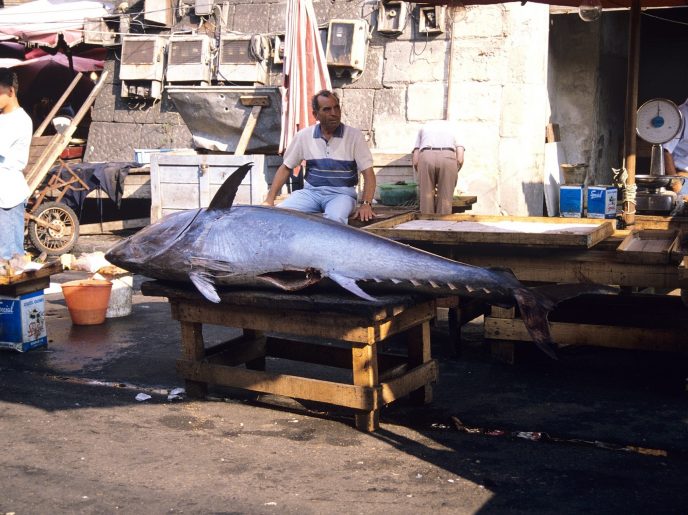
A traditional fishing scene immortalized by Rossellini
The name “tuna” covers 14 species belonging to 4 different genera(Auxis, Katsuwonus, Euthynnus, Thunnus), which are found in almost all the seas of the world. This large family of fish is of major economic importance in a fully globalised economy.
A growing global catch
In 65 years, the world’s tuna catch has increased by 1, %, from 500,000 to 5 million tonnes, and demand could reach nearly 8 million tonnes by 2025! In terms of export value of seafood products, tuna is in4th place, behind shrimp, salmon and white fish.
At the end of the chain, the value at sale is estimated at 33 billion dollars (i.e. 24% of the world seafood industry). The average per capita consumption of tuna in 2007 (worldwide) is about 0.45 kg per year. In the European Union, more than 2 kg of canned tuna per capita was consumed in 2012!
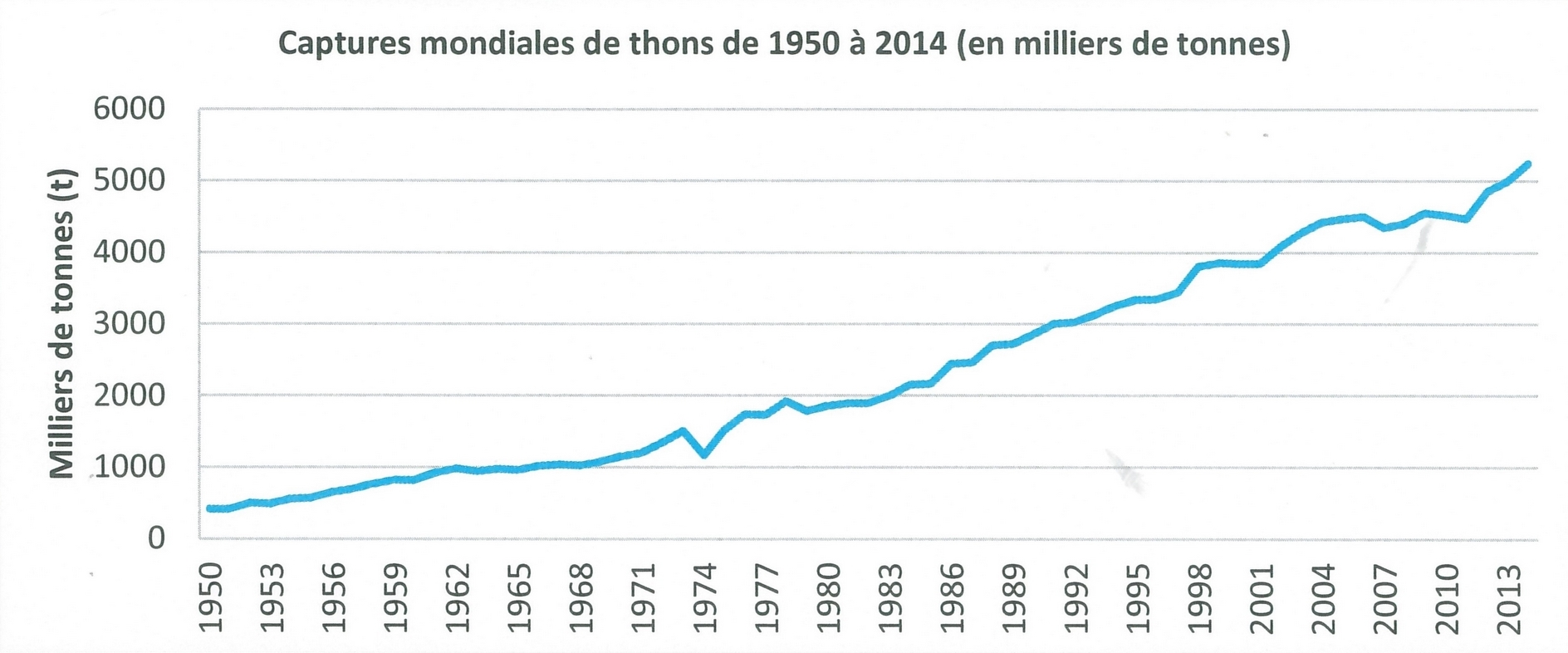
Experts' Corner
Of the 14 tuna species, 7 are of major commercial importance.
3 species* (Atlantic bluefin tuna, Pacific bluefin tuna, Southern bluefin tuna) represent only 1% of the volume of catches.
Read more:
- Find tuna trade data in the IDDRI report “Tuna: fish and fisheries, markets and sustainability – 2017”
- The State of World Fisheries and Aquaculture
FAO – 2020 Edition

A record-breaking fish
The Atlantic bluefin tuna is a large marine fish and the largest in the “tuna” family. At the age of 30, it can reach 3 meters and exceed 600 kg! Its size and weight at maturity differ according to the geographical area. In the Mediterranean, it is adult at the age of 4 years (i.e. 30 kg for a length of approximately 120 cm) whereas it takes 9 years in the West Atlantic (i.e. 150 kg for approximately 190 cm).
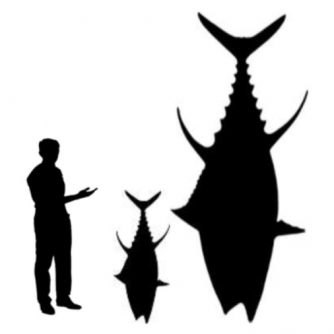
"Small" or "big"?
In our collective memory, the size and weight that certain animal species can reach (crocodiles, sharks, large fish such as cod or halibut) have disappeared. In just one or two generations, we have hunted, fished, and eliminated the large individuals. What we consider today as “big” specimens, are in fact only “small” or “medium” ones! Atlantic bluefin tuna is no exception to this rule. A fish of 30 kg – a weight that is already quite substantial – is only a “baby” compared to large individuals of several hundred kilos!
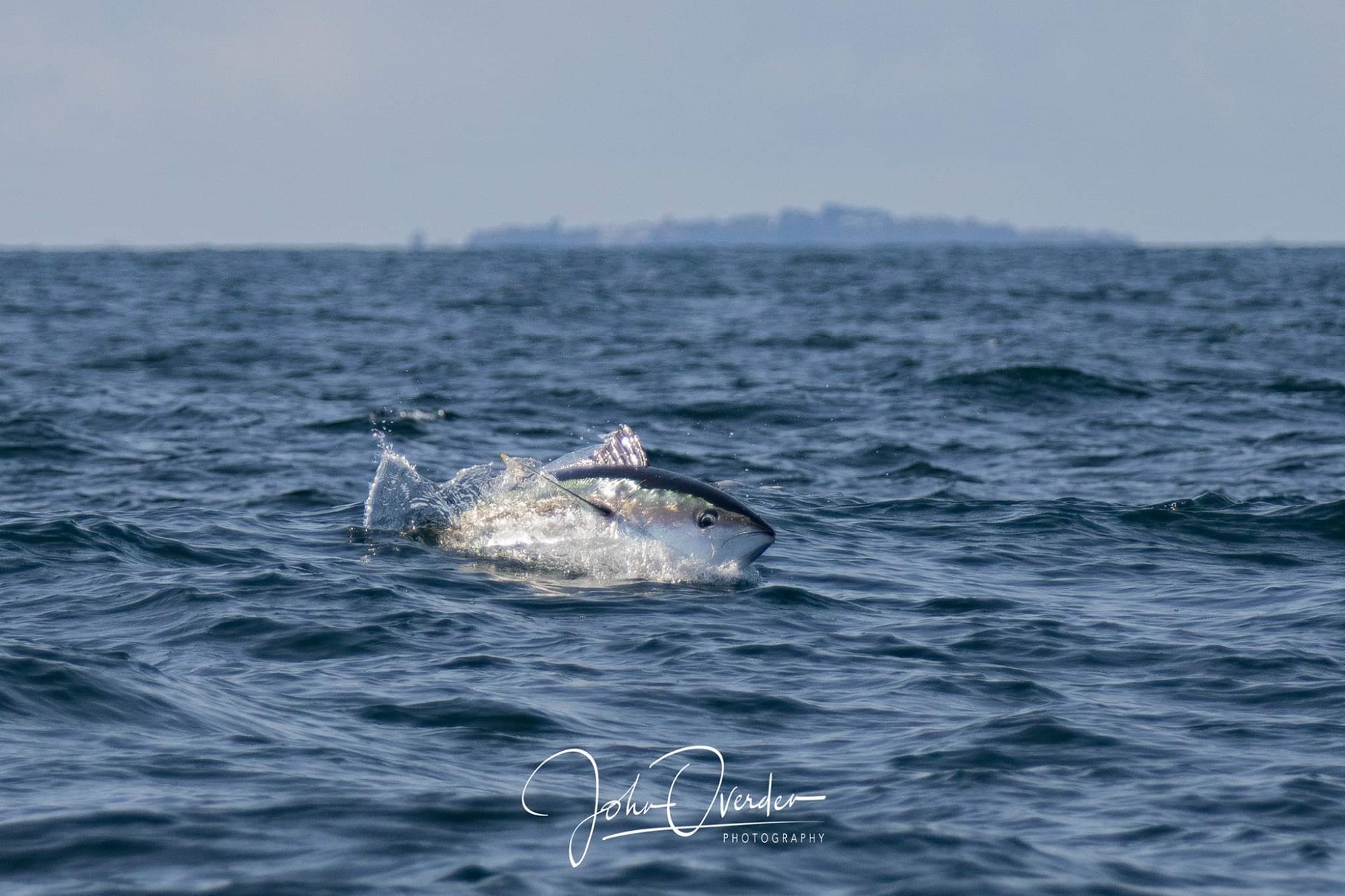
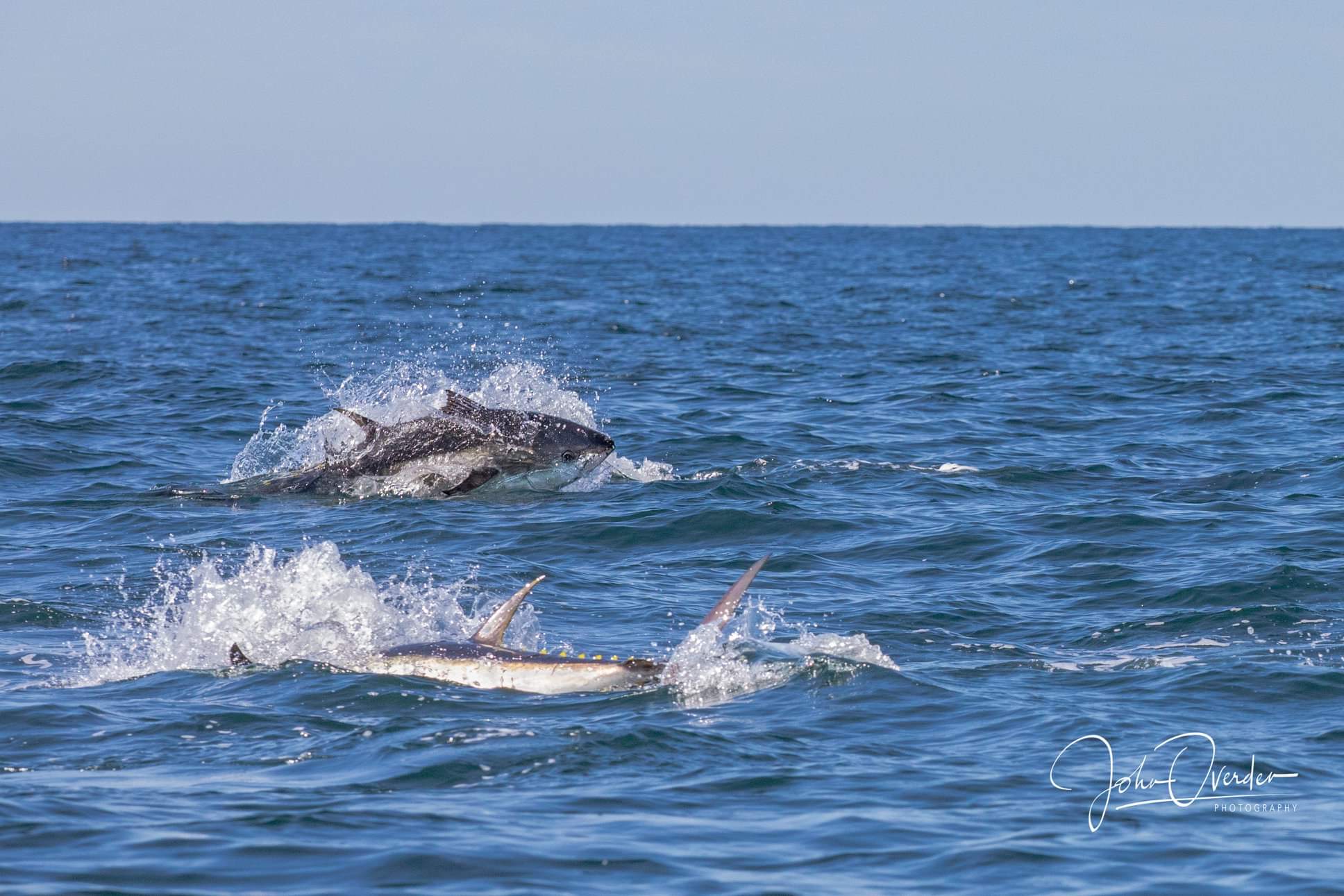


In the Mediterranean basin, the Atlantic bluefin tuna has been exploited since the Neolithic period, as attested by the rock engravings in the caves of Levanzo Island, near Sicily (photo below, far right: it is a tuna and not a dolphin!).
It is also present on this Greco-Hispano-Carthaginian bronze coin (200 to 100 B.C.), originating from Gades or Carthago Nova, a Greek city in Spain. Coll. Oceanographic Institute.
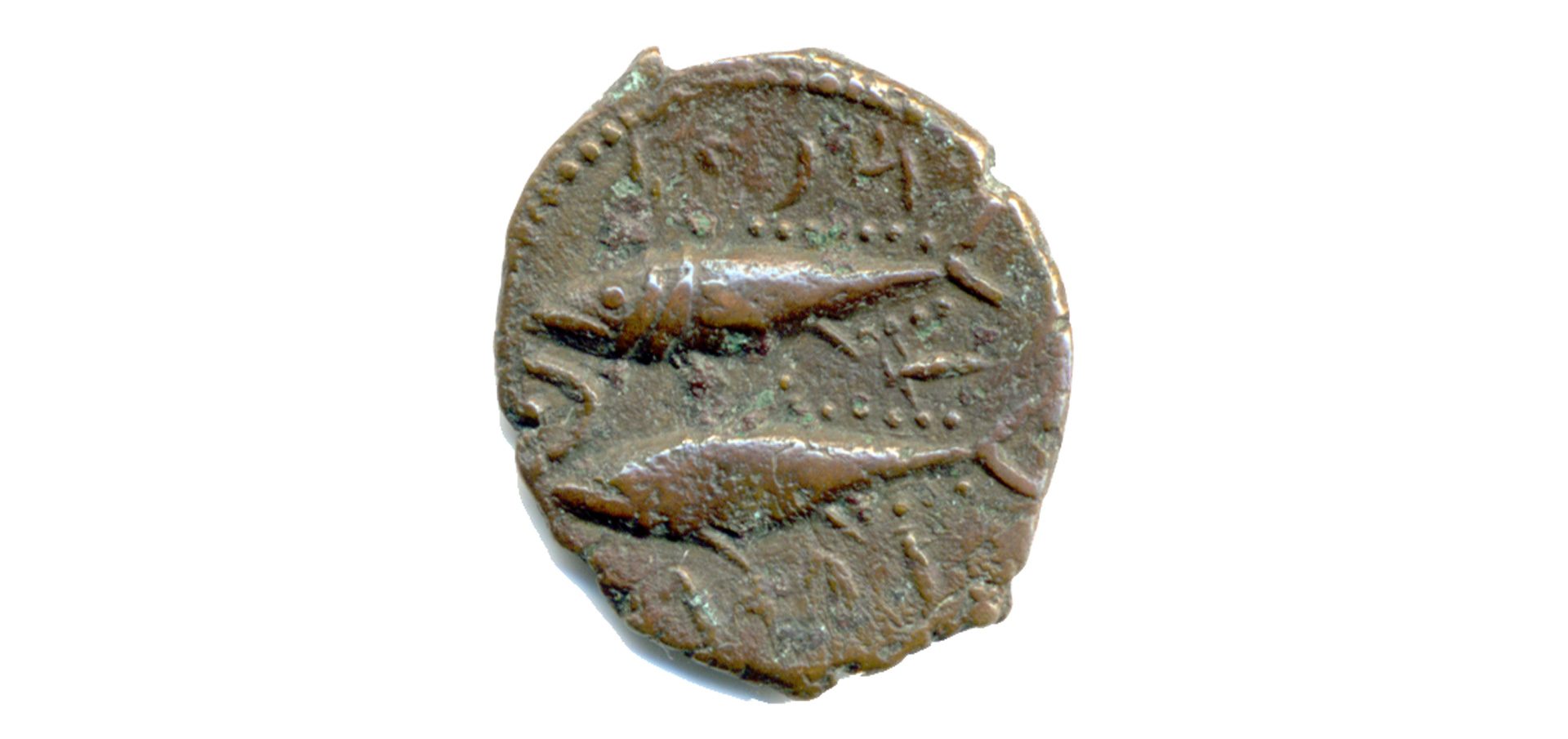

A star of Japanese cuisine
Today, bluefin tuna is used to make sashimi and sushi for health-conscious Japanese consumers. Other tunas (skipjack, albacore, yellowfin) are used more in canned and other prepared and preserved products.
Premium bluefin tuna are reaching record prices. In January 2019, at the Tokyo New Year’s auction, a 278kg Pacific bluefin tuna (Thunnus orientalis cousin of the Atlantic bluefin tuna Thunnus thynnus), caught in northern Japan, was auctioned for an incredible 2.7 million euros!
Mediterranean tuna is exported...
In the Mediterranean basin, more than 20 countries exploit bluefin tuna, which makes it a highly shared marine resource that can only be managed within an international framework. Over the last two decades, 60% of the catches have been made by France, Spain, Italy and Japan, giving these countries a particular responsibility.
The vast majority of bluefin tuna caught in the Mediterranean by industrial fisheries is destined for aquaculture and the fattening activity that supplies the Japanese market.
Atlantic bluefin tuna
The Atlantic bluefin tuna (Thunnus thynnus) lives in the Atlantic Ocean, the Mediterranean and the Black Sea. It moves in schools and makes important migrations to feed and reproduce. Although it tends to live in surface waters, it can dive to depths of up to 1000 m. This voracious and fast predator (it is capable of speeds of over 100 km per hour) feeds on fish, squid and pelagic crustaceans (living in open water). A record-breaking fish, it can live for 40 years or more, reach 3 m in length and weigh 600 kg! Located at the top of the marine food chain, its predators are the killer whale, the great white shark … and Man!
Read more:
Find the IFREMER press kit on bluefin tuna
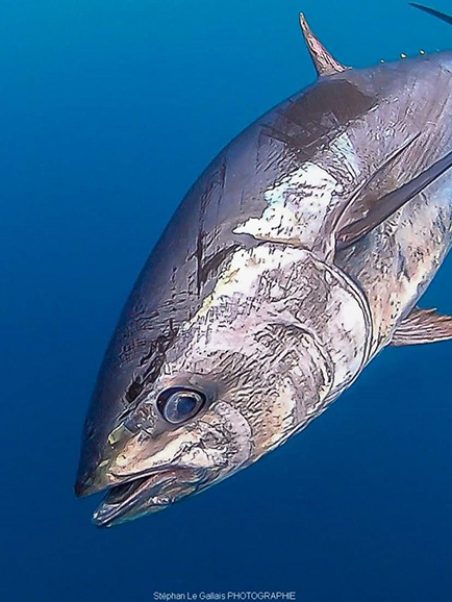
Geographical distribution of bluefin tuna
This map shows the spatial distribution of the Atlantic bluefin tuna: in blue its distribution area, in yellow the known spawning areas. The black arrows indicate the main migration routes (Figure adapted from Fromentin and Powers – 2005) © Ifremer.
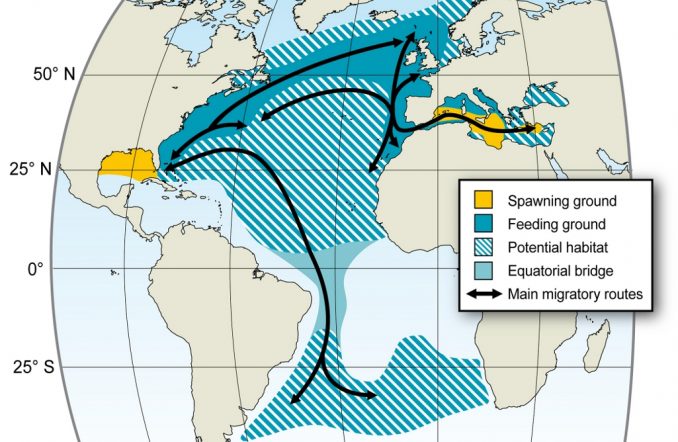
Did you know?
The bluefin tuna is one of the rare fish capable of endothermy: it adapts its body temperature to its environment and can thus evolve in cold water (where it feeds) or warm water (where it reproduces), that is to say from 3 to 30°C!






